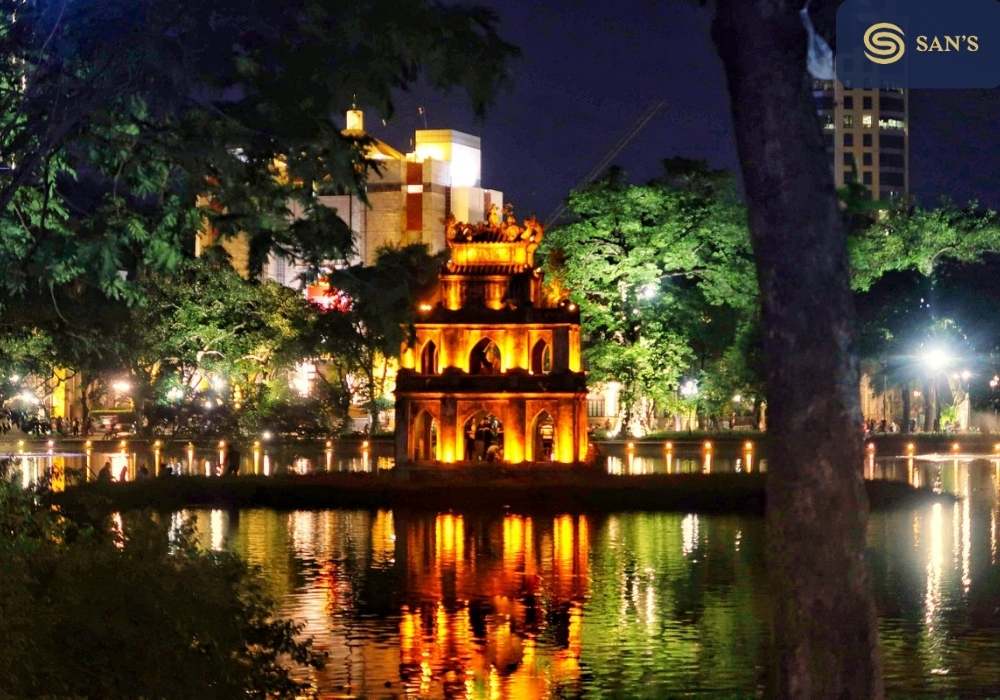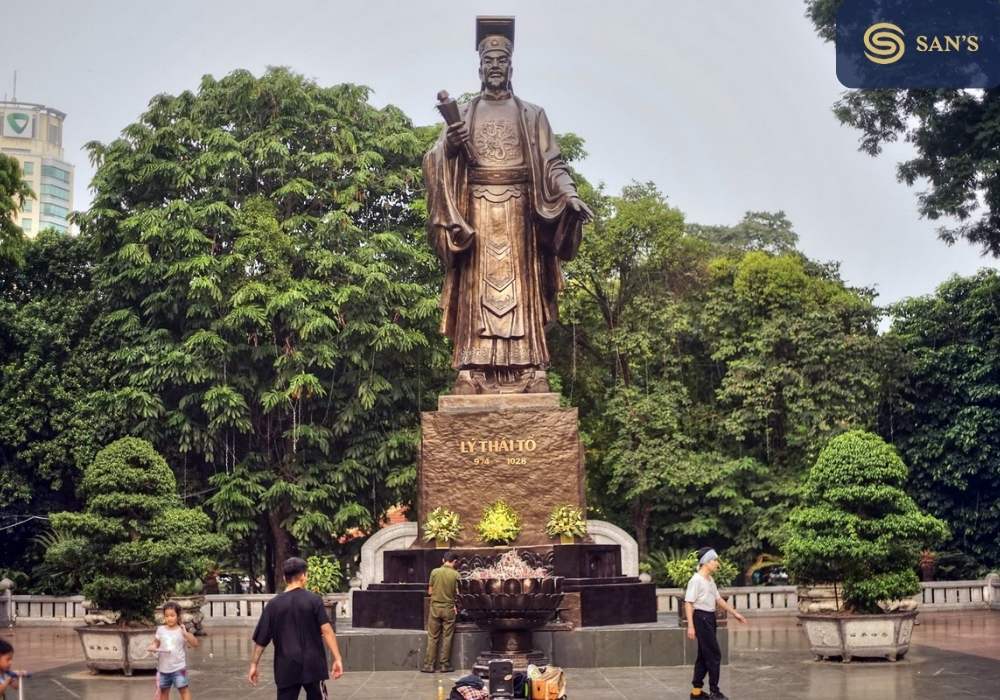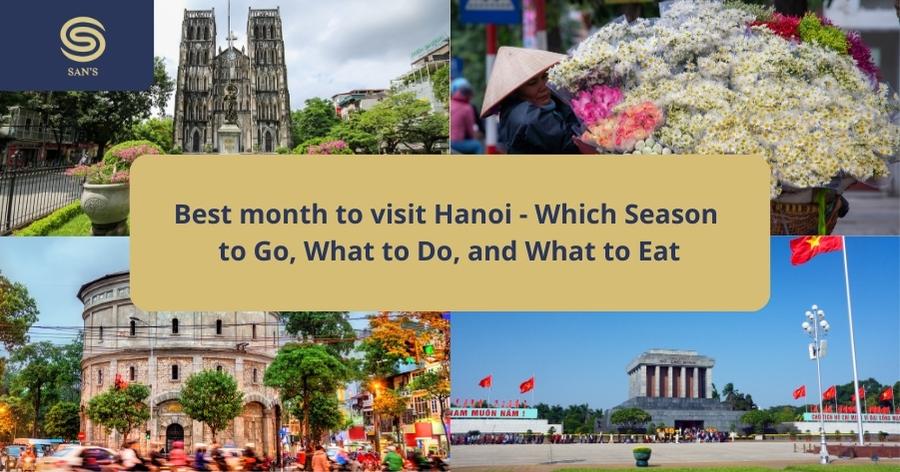When it comes to “what to see in Hanoi”, the list seems almost endless. This iconic city, nestled on the banks of the Red River, offers travelers a unique blend of ancient traditions and modern urban life. Hanoi’s rich history, stretching back over a thousand years, has bestowed it with a plethora of sights and sounds that beg to be explored.

From grand pagodas and colonial French edifices to bustling markets and contemporary skyscrapers, deciding what to see in Hanoi can be both exciting and overwhelming. In this article, we’ll guide you through the must-visit spots and hidden gems, allowing you to experience the heart and soul of Vietnam’s capital.
Historical Sites & Landmarks
When contemplating “places to see in Hanoi”, historical landmarks inevitably top the list. The city’s ancient soul is palpable in its architectural wonders and timeless edifices. Here are some highlights:
- Ho Chi Minh Mausoleum: Standing as a monumental tribute to the founder of modern Vietnam, this site is a solemn testament to the nation’s respect for its revolutionary leader. A visit here offers an understanding of Vietnam’s path to independence and its enduring reverence for Uncle Ho.

- The Imperial Citadel of Thang Long: Declared a UNESCO World Heritage site, this ancient citadel lets you dive deep into 13 centuries of Vietnamese history. With relics from the Ly, Tran, and Nguyen dynasties, the citadel offers a rare glimpse into the nation’s vibrant past.

- Temple of Literature: Renowned as one of Hanoi’s most picturesque tourist spots, this temple is a homage to Confucius and houses Vietnam’s first national university. With its serene courtyards and ancient architecture, it represents the country’s commitment to knowledge and education over the centuries.

>> 7 best places to visit in Hanoi
Cultural Experiences
Wondering “places to see in Hanoi” to truly immerse in its cultural tapestry? Hanoi, the heart of Vietnam, pulsates with experiences that allow visitors to touch the core of its traditions, arts, and daily life. Here’s a glimpse:
- Water Puppet Theatre: A distinctive spectacle that has its roots in Vietnam, this traditional performance is not merely a show, but a testament to the rice paddy culture of the country. Crafted intricately, the puppets dance on water, narrating tales of folklore and ancient village life, with live traditional music amplifying the ambiance.

- Old Quarter: Stepping into the Old Quarter is like taking a leap back in time. The labyrinth of narrow streets, each named after the trade that was historically practiced there, is alive with the buzz of vendors, the aroma of street food, and the charm of age-old structures. Wander and get lost in its alleys to truly grasp the spirit of Hanoi.

- Hanoi Opera House: An architectural masterpiece that stands as a symbol of Hanoi’s colonial era, the Opera House is not just a place for performing arts but also a reminder of the city’s intertwined past with French colonialism. Its grandeur and elegance make it a must-visit spot for those keen on architecture and history.

Natural Beauties & Parks
- Hoan Kiem Lake: Often termed as the ‘Jewel of Hanoi’, Hoan Kiem Lake is more than just a scenic spot. Steeped in legend and history, it’s a place where locals and tourists converge for leisurely strolls, Tai Chi sessions, or simply to find solace. The Tortoise Tower, standing majestically in the middle of the lake, and the iconic red-painted Huc Bridge leading to Ngoc Son Temple, make it one of the picturesque places to see in Hanoi.

- West Lake: As the largest freshwater lake in Hanoi, West Lake is a haven for those seeking tranquillity amidst the city’s bustle. With numerous gardens, pagodas, and temples dotting its perimeter, including the revered Tran Quoc Pagoda, it offers visitors a blend of natural beauty and spiritual enlightenment. A bike ride around the lake or savoring the famed shrimp pancakes from the lakeside cafes further accentuates the experience of this special place to see in Hanoi.
Local Markets & Shopping Streets: Top Places to See in Hanoi
- Dong Xuan Market: Venture into the heart of Hanoi’s commerce at Dong Xuan, the city’s biggest indoor market. From tantalizing street food to vibrant textiles, this bustling bazaar offers a slice of daily Vietnamese life and a unique shopping experience that shouldn’t be missed.

- Hang Dao Street: A hub for traditional fashion, Hang Dao Street beckons with its array of silk stores, handcrafted souvenirs, and stalls showcasing the elegant Vietnamese Ao Dai. As you saunter along, the blend of heritage and modernity on this street presents a vivid snapshot of Hanoi’s evolving fashion landscape.
Museums & Galleries: Must-Visit Places to See in Hanoi
- Hanoi Museum: A testament to modern architectural wonder, the Hanoi Museum, with its distinct inverted pyramid design, stands out in the city’s skyline. Step inside to journey through the millennia, as the museum’s extensive exhibits shed light on Hanoi’s storied past, from ancient civilizations to contemporary times.
- Vietnamese Women’s Museum: A heartfelt tribute to the indomitable spirit of Vietnamese women. This museum chronicles their significant roles – from the fierce warriors in history to the nurturing mothers at home. Through artifacts, photographs, and interactive exhibits, visitors gain a deeper appreciation of the sacrifices, resilience, and contributions of women to Vietnamese society.
As you weave your way through the bustling streets, tranquil parks, and historical landmarks of Hanoi, you’re not just seeing sites, but living a tale as old as time. Hanoi gracefully marries its ancient soul with modern vibrancy, offering a symphony of experiences that resonate deeply with every traveler.
So, whether it’s your first visit or your hundredth, Hanoi always has a new chapter to unveil, inviting you to be a part of its timeless narrative. Dive in, explore, and let the charm of Hanoi leave an indelible mark on your heart.
FAQs about places to see in Hanoi
1. When is the best time to visit Hanoi? The most favorable times to visit Hanoi are during the spring (March to April) and autumn (September to November) when the weather is milder and the skies are clearer.
2. Is it safe to walk around Hanoi at night? Yes, Hanoi is generally safe for tourists at night. However, as with any big city, it’s always a good idea to be aware of your surroundings and avoid poorly lit areas.
3. Are there any local customs I should be aware of? When visiting temples or pagodas, dress modestly and remove your shoes before entering. A simple bow or nod is a common greeting. Also, haggling is common in local markets, but do so respectfully.
4. What is the local currency and where can I exchange money? The local currency is the Vietnamese Dong (VND). There are numerous banks and currency exchange booths throughout the city that offer competitive rates.
5. How do I get around the city? While walking is a great way to explore the Old Quarter, for longer distances, taxis, cyclos, and motorbike taxis are readily available. Just ensure the taxi meter is turned on before you start your trip.
6. Can I drink tap water in Hanoi? It’s advisable to drink bottled water, which is readily available and cheap. Avoid consuming tap water directly.
7. Are there vegetarian or vegan food options? Yes, Hanoi offers a variety of vegetarian and vegan restaurants. Pho, the famous Vietnamese noodle soup, also has vegetarian versions. Just communicate your dietary preferences clearly to the staff.
8. Do I need to tip in Hanoi? Tipping isn’t a widespread practice in Vietnam, but it’s becoming more common, especially in the tourism sector. While not obligatory, small tips for good service are always appreciated.
9. Are English and other languages spoken widely? While Vietnamese is the official language, many people, especially in the service industry, speak basic English. Additionally, in tourist areas, you’ll find individuals who speak French, Chinese, and some other languages.
10. What should I pack for my trip to Hanoi? Lightweight clothing is suitable for most of the year, but bring a jacket or sweater for the cooler months. If you’re visiting during the rainy season, an umbrella or raincoat is a must. Don’t forget comfortable walking shoes for exploring.





